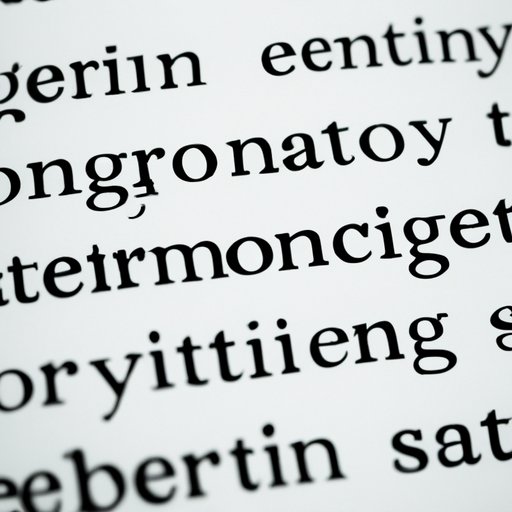Introduction
Repetition is a powerful tool in writing, one that can be used to create an emotional connection with readers, as well as to convey ideas more clearly and creatively. In this article, we’ll explore the power of repetition in writing and examine its role in crafting engaging content.
Definition of Repetition
Repetition is the act of repeating words, phrases, or sentences in writing. It’s a rhetorical device commonly used in literature, poetry, speeches, and other forms of writing. Repetition can take many different forms, including alliteration (the repetition of the same sound at the beginning of words), anaphora (the repetition of the same word or phrase at the beginning of successive clauses), and parallelism (the repetition of similar syntactic structures).

Overview of the Power of Repetition in Writing
The power of repetition in writing lies in its ability to emphasize and reinforce ideas. By repeating certain words or phrases, writers can draw attention to important concepts and help readers remember them more easily. Repetition can also be used to create rhythm and flow in writing, making it easier for readers to understand and engage with the text.
Exploring the Power of Repetition in Writing
How Repetition Enhances Clarity and Creativity in Writing
Repetition can be used to make writing clearer and more concise. By repeating key words and phrases, writers can ensure that readers don’t miss important points. This is especially useful when conveying complex ideas, as it helps to break down information into smaller, more digestible chunks.
Repetition can also be used to add creativity to writing. By using creative language and varying sentence structure, writers can make their writing more interesting and engaging. For example, using alliteration or parallelism can add texture and depth to writing, making it more enjoyable for readers.
Using Repetition to Create Cohesion in Writing
Repetition can be used to connect different parts of a piece of writing. By repeating certain words or phrases throughout the text, writers can create a sense of unity and cohesion. This helps to keep readers focused and engaged, ensuring that they don’t lose track of the main ideas being discussed.

Examining the Role of Repetition in Crafting Engaging Writing
Analyzing the Effects of Repetition on Reader Engagement
Repetition can be an effective way to keep readers engaged with a text. By repeating key words or phrases, writers can draw attention to important points and ensure that readers don’t forget them. Repetition can also be used to build suspense and create anticipation, making readers eager to find out what happens next.
Examples of How Repetition Can Be Used Effectively in Writing
Repetition can be used in a variety of ways in writing. Here are some examples of how repetition can be used effectively:
• Alliteration: Repeating the same sound or letter at the beginning of words, such as “Peter Piper picked a peck of pickled peppers”
• Anaphora: Repeating the same word or phrase at the beginning of successive clauses, such as “We shall fight on the beaches, we shall fight on the landing grounds, we shall fight in the fields and in the streets”
• Parallelism: Repeating similar syntactic structures, such as “He was not only clever, he was also kind”
• Repetition of key words and phrases: Repeating certain words or phrases throughout a text, such as “love is patient, love is kind”
Conclusion
In conclusion, repetition is a powerful tool in writing. It can be used to emphasize and reinforce ideas, create cohesion, and keep readers engaged. By using repetition effectively, writers can ensure that their writing is clear, creative, and engaging.
Summary of the Main Points Discussed
This article explored the power of repetition in writing. We looked at how repetition can be used to enhance clarity, creativity, and reader engagement. We examined the different forms of repetition, such as alliteration, anaphora, and parallelism, and discussed how they can be used effectively in writing.
Tips for Using Repetition in Writing
When using repetition in writing, it’s important to strike a balance between repetition and variation. Too much repetition can make writing dull and monotonous, while too little can make it confusing and difficult to follow. Here are some tips for using repetition effectively:
• Use repetition to emphasize key points and ideas
• Vary sentence structure and language to add interest and creativity
• Use repetition to create a sense of cohesion and flow
• Avoid excessive repetition, as it can make writing dull and monotonous
Call to Action – Encouraging Readers to Use Repetition in Their Writing
Now that you’ve learned about the power of repetition in writing, why not give it a try? Experiment with different forms of repetition, such as alliteration and parallelism, to see how they can enhance your writing. With practice and experimentation, you’ll soon be able to use repetition to create engaging and memorable content.
(Note: Is this article not meeting your expectations? Do you have knowledge or insights to share? Unlock new opportunities and expand your reach by joining our authors team. Click Registration to join us and share your expertise with our readers.)
